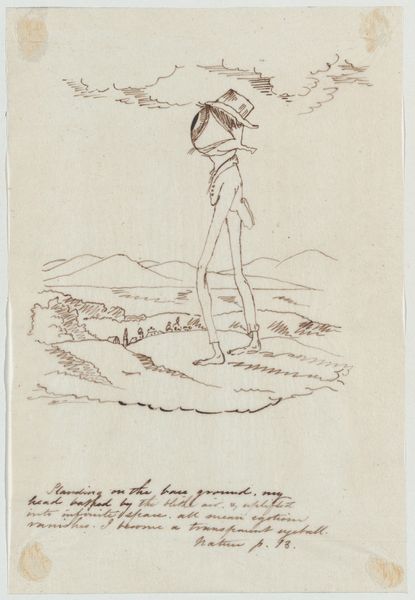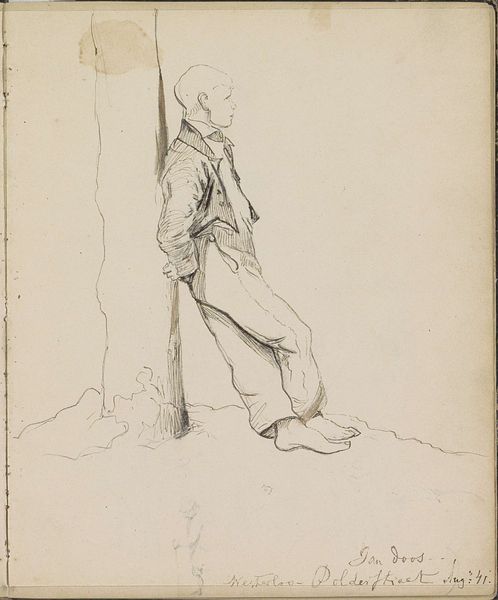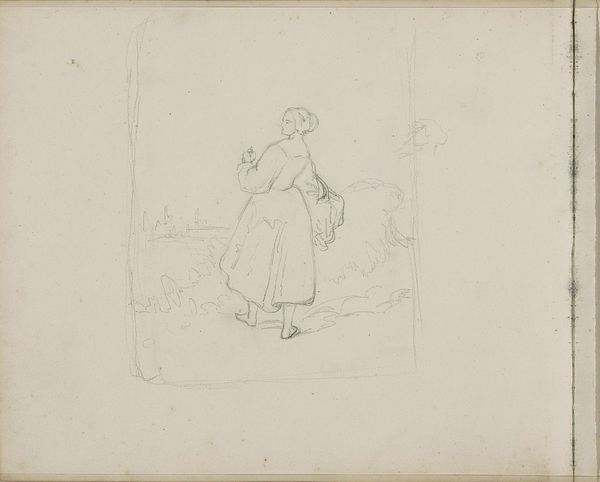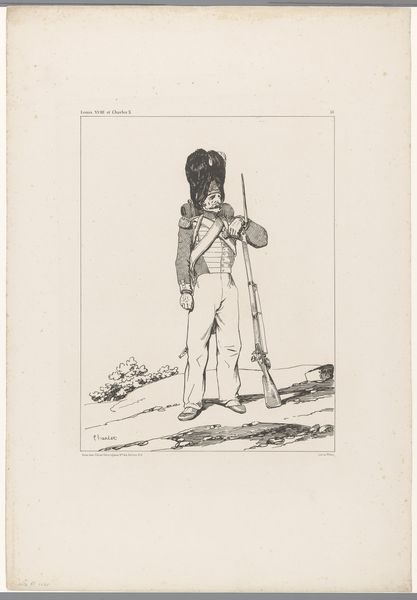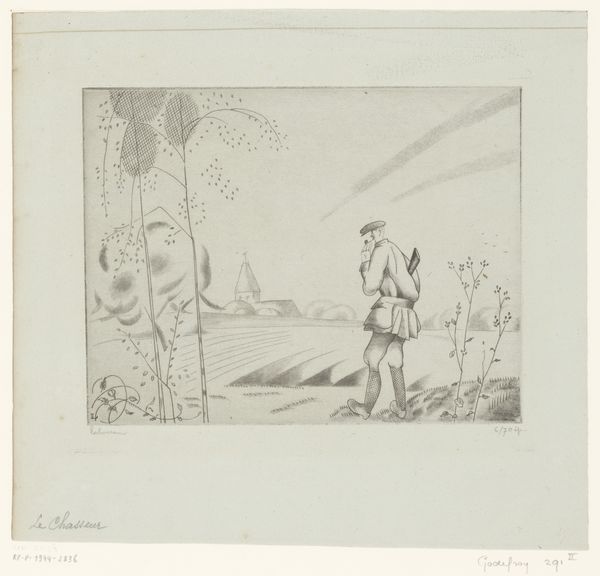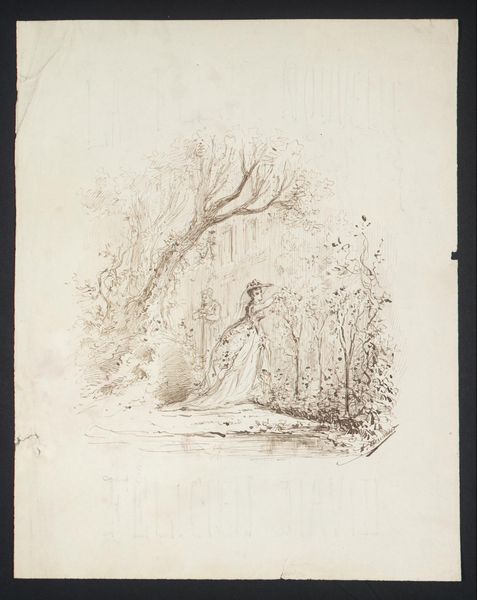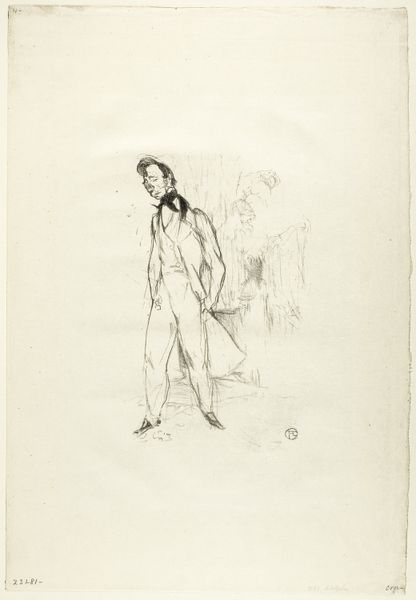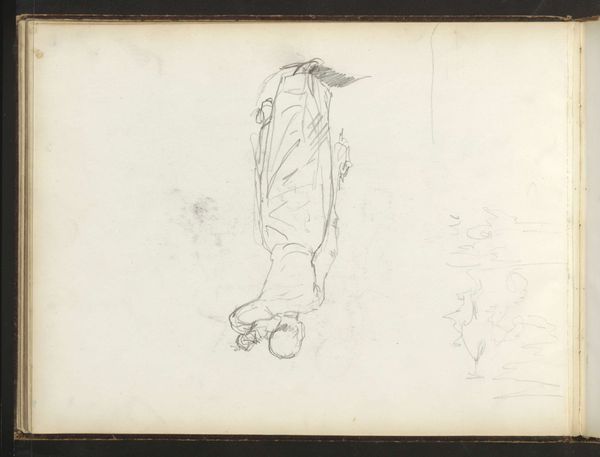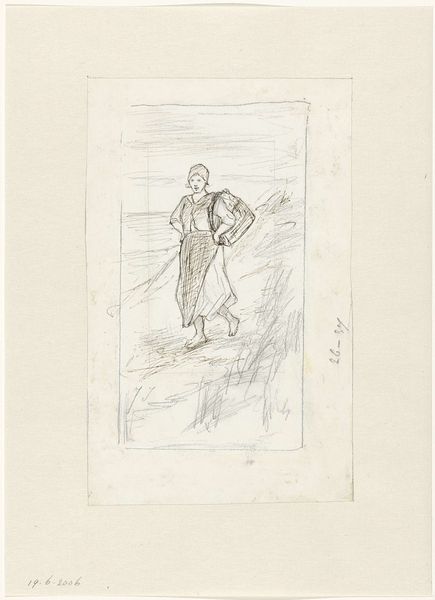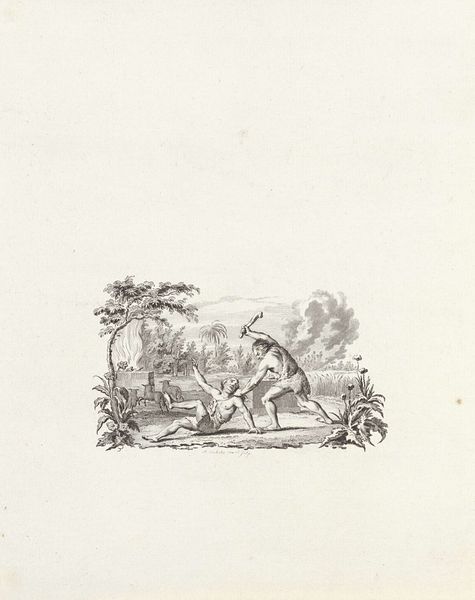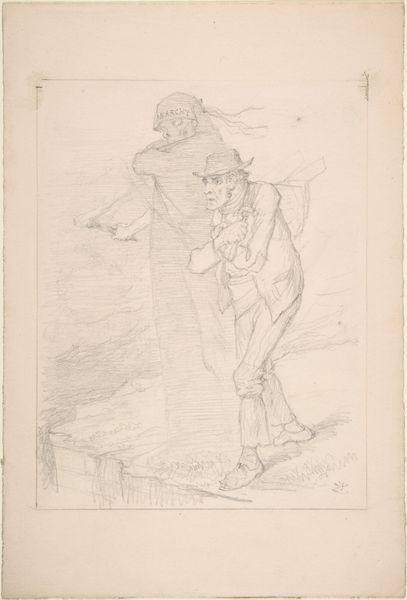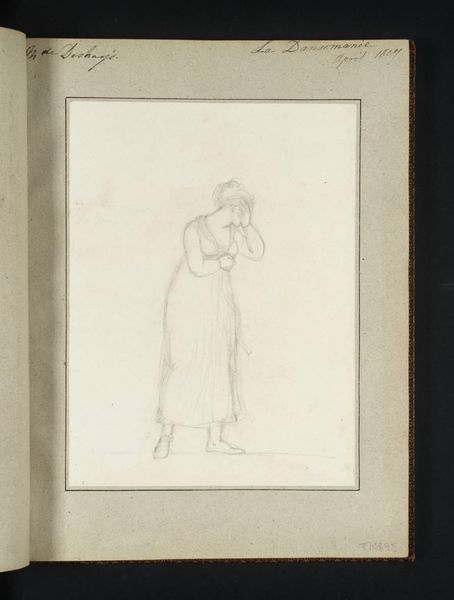
print, engraving
# print
#
landscape
#
figuration
#
romanticism
#
history-painting
#
engraving
Dimensions: height 332 mm, width 382 mm
Copyright: Rijks Museum: Open Domain
Editor: Here we have Teodoro Matteini's print, "Napoleon nadenkend in een landschap," from 1808, rendered in engraving. There's a melancholy air to it, this solitary figure, supposedly Napoleon, seemingly burdened despite the grand landscape and military flags nearby. What strikes you when you look at it? Curator: The print’s representation of Napoleon through a Romantic lens is particularly telling. The scene departs from earlier Neoclassical depictions that emphasized heroism and invincibility. We see a man detached, almost vulnerable, amidst the trappings of power. This is happening at a time when Napoleon’s image was being carefully curated for public consumption. Why do you think the artist chose this less triumphant pose? Editor: Perhaps it's an attempt to humanize him, or maybe to hint at the costs of his ambition. The title suggests contemplation, implying a moment of self-doubt that even an Emperor might face. Is there a political undercurrent here? Curator: Undoubtedly. Remember, prints were a popular and accessible medium for disseminating political ideas. By depicting Napoleon in such a pensive state, Matteini could be subtly critiquing or questioning the narrative of unchallenged authority, playing into existing sentiments about the ongoing Napoleonic Wars. What kind of audience would have been most receptive to this interpretation? Editor: I would assume those perhaps weary of war or critical of the Emperor's expansionist policies, seeking an alternative perspective. It’s fascinating how an image, distributed widely, could shape public opinion. Curator: Precisely! And that makes this print such a rich source for understanding the politics of imagery in the early 19th century. We must always question the intentions behind the art, considering the public role and perception. Editor: That makes so much sense! It's a great reminder to think about art not just as aesthetics, but as part of a bigger social conversation. Curator: Indeed. Analyzing historical artwork within the socio-political and cultural environment adds another dimension to our perspective and encourages us to appreciate not just the aesthetics, but the underlying narrative as well.
Comments
No comments
Be the first to comment and join the conversation on the ultimate creative platform.
